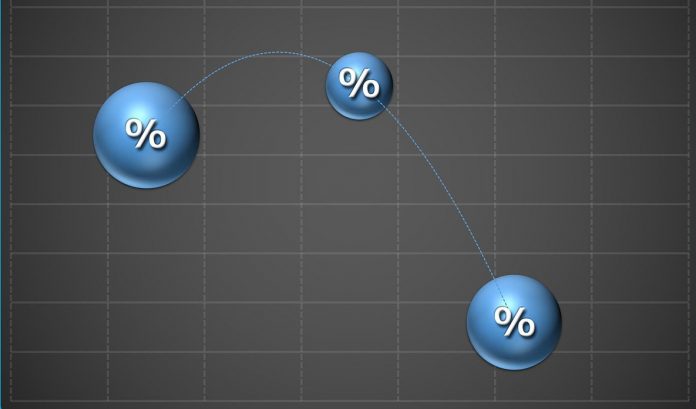Do I believe that we are in the middle of an asset valuation bubble? Absolutely. Do I believe it will burst? As in all prior bubbles, this too will burst – and we may be closer to that event than we think.
Historically, the most frequent catalyst of a bubble-bursting is rising inflation and interest rates.
Bubbles, and related exuberance, encourage large amounts of borrowing and margin investing, both of which can cause pain when rates rise. Moreover, fast-growth companies, whose valuations incorporate overly optimistic assumptions about the future, are severely affected by rising interest rates.
What causes bubbles?
For starters, it is human nature. Humans are overconfident momentum traders; they like to buy winners, a process that drives prices up further. Prices eventually rise so much above fundamentals that this sets the stage for a reversal, when inflation and interest rates start to rise.
Financial innovation historically led to momentum crazes toward the new securities that investment bankers and merchant houses created, which made people justify any kind of valuations, everything from the South Sea Co. to the Dutch tulip mania. Financial innovations fuelled large amounts of borrowing and margin investing and caused bubbles to burst when inflation and interest rates started to increase.
A classic example in more recent history is Long Term Capital Management (LTCM). Its highly leveraged portfolio was premised on the idea that the future will look much like the past – in terms of the relationship between various securities and on which their equity and bond arbitrage were based. The 1998 financial crisis in Russia, which made all securities highly correlated, made LTCM sustain huge losses and led to its demise. Interest rates were on the rise at the time – the federal funds rate rose from 4.73 per cent at the end of 1995 to 5.53 per cent in June, 1998.
The “Black Monday” stock market crash of Oct. 19, 1987, was caused by computer-driven program trading that relied on portfolio insurance to hedge a portfolio against market risk – insurance that failed when it was most needed. This event occurred in a rising rate environment: The fed funds rate rose from about 6 per cent at the beginning of 1987 to 7.4 per cent by the end of September, 1987.
The dot-com mania of late nineties and subsequent market crash also happened in a rising rate environment. The fed funds rate rose from 4.27 per cent at the end of 1998 to 6.5 per cent by August, 2000.
The Great Recession of 2008-09 and the U.S. housing-industry collapse also happened in a rising interest rate environment. The fed funds rate rose from about 1 per cent in 2004 to 5.5 per cent in 2007.
Where do we stand currently?
Human nature and margin investing: Buying stocks on margin is skyrocketing. Margin debt has recently experienced its greatest increase of the past 20 years. Individual investors are investing in greater numbers in the market. Retail investors are notoriously bad market timers; they are exuberant at the market peaks and panic stricken at market bottoms. Inflows on exchange-traded funds and U.S. equity funds have exploded.
Financial innovation: Financial-services company Robinhood has made investing look like a game and encourages frequent trading, especially by novice investors. Social networks, such as Reddit, have created a new class of investing “experts.” Then there’s the emergence of cryptocurrencies that live on the blockchain and backed by nothing real. And let’s not forget the popularity of special purpose acquisition companies, with more SPAC capital raised in 2020 than in any previous year in history.
Other signs of market exuberance:
- The Bull/Bear survey by the American Association of Individual Investors, taken at the end of April, indicates bullish investors outnumber the bearish investors by 32 points. The AAII survey is historically a contrarian indicator, and when the spread exceeds 20 points there is reason for concern.
- Second, the CBOE Volatility Index, or VIX, indicates that the fear of a market correction is at a very low level. Again, a contrarian indicator.
- Third, cash balances of professional money managers are well below historical levels.
- Fourth, the ratio of insider sales to buys indicates that there are 143 sales for every buy by insiders, according to recent data from Richardson Wealth.
- Fifth, the emergence and popularity of leveraged loans – mergers that are taking place at elevated multiples – and rising global debt are flashing red.
- Finally, valuation metrics point to a richly valued market – for example, equity value to GDP stands at the highest level since the 1950s – with the only exception the 1999-2000 tech bubble – while the Wilshire 5000 Total Market Index to GDP ratio has reached a record high.
While the fed funds rate has remained stagnant to date, with inflation simmering, it is only a matter of time before it starts rising – market rates have already risen, with the 10 year U.S. Treasury yield having gone from 0.6 per cent to 1.6 per cent in matter of a few months.
With a nod to famed investor Seth Klarman, who once declined an invitation to invest in LTCM, “outlier” events are what kill portfolios, especially when the portfolios are overleveraged.
First published May 26, 2021 / The Globe and Mail



![Η Άννα Διαμαντοπούλου ανακοίνωσε την υποψηφιότητά της για την προεδρία του ΠΑΣΟΚ [βίντεο]](https://culpanews.gr/wp-content/uploads/2024/07/diamantopoyloy_anna-2024-001-218x150.png)




















![Το ηθικό υπόβαθρο των φιλελευθέρων αντιλήψεων [Πτυχές της φιλοσοφίας της Ayn Rand]](https://culpanews.gr/wp-content/uploads/2024/01/skaki-freepik-2024-001-218x150.png)




















![Οι Beatles “ζωντανεύουν” ξανά χάρη στην τεχνητή νοημοσύνη [ΑΙ]](https://culpanews.gr/wp-content/uploads/2023/11/beatles-003-218x150.png)
![“Σκεπαστή Αγορά της Καλλιθέας” – Η Αγορά των Ποντίων [photos]](https://culpanews.gr/wp-content/uploads/2024/04/sa-426-218x150.png)














